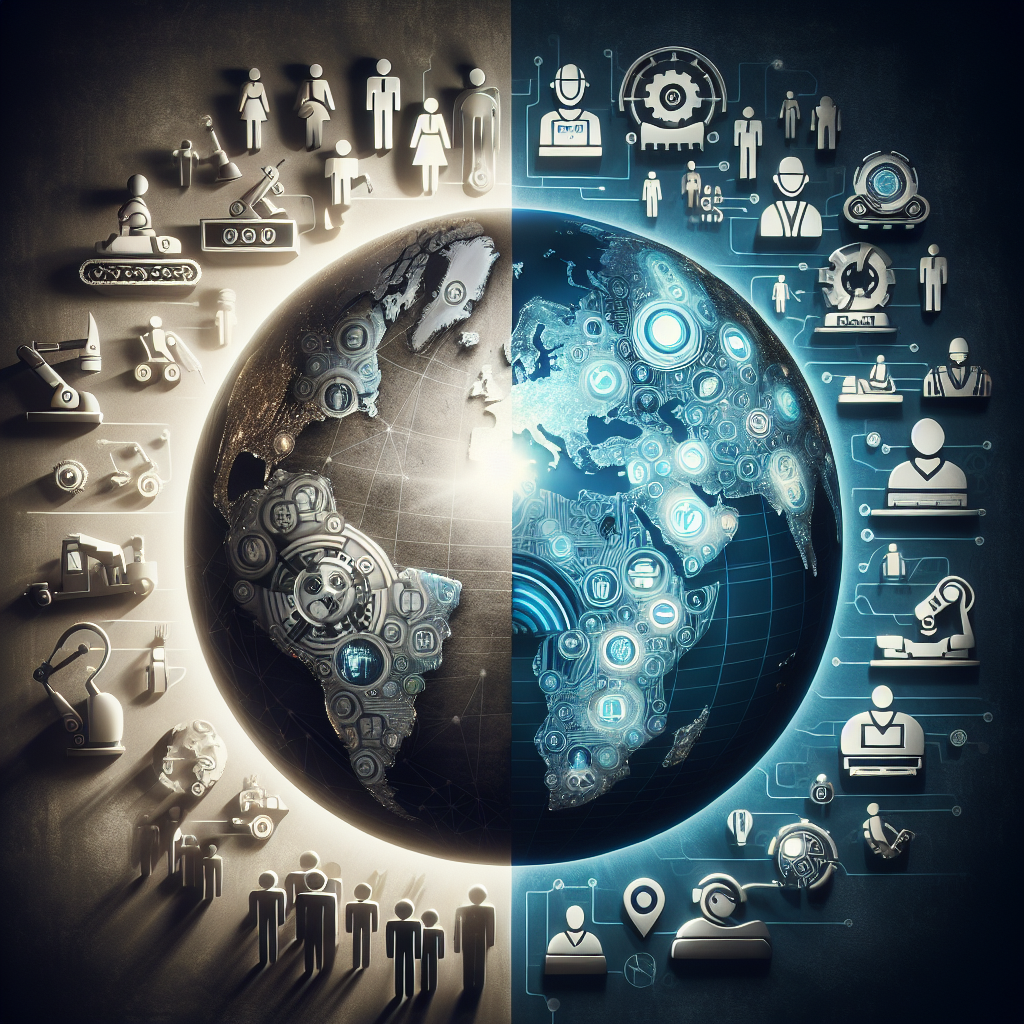Title: The Future of Work: How Automation is Reshaping the Global Job Market
Introduction
In recent decades, technological advancements have profoundly transformed industries worldwide. Automation, driven by artificial intelligence (AI), machine learning, and robotics, is at the forefront of this revolution. As we stand on the brink of a new era, it’s essential to understand how automation is reshaping the global job market, the opportunities it presents, and the challenges it poses for workers, employers, and policymakers.
The Evolving Landscape of Work
Automation is fundamentally changing how work is done across various sectors, from manufacturing and logistics to finance and healthcare. In manufacturing, robotics and AI-driven systems have revolutionized assembly lines, improving efficiency and reducing costs. Similarly, in logistics, automated warehouses and delivery drones streamline supply chains, expediting the movement of goods.
In the financial sector, AI algorithms analyze vast datasets to make investment decisions, detect fraud, and manage risk with unprecedented accuracy and speed. Meanwhile, in healthcare, automation is augmenting diagnostics and patient care through technologies like robotic surgery and AI-powered diagnostic tools. Across industries, automation is enhancing productivity, quality, and speed, reshaping traditional job roles and creating new opportunities.
Opportunities Presented by Automation
-
New Job Creation: While automation may replace certain manual or repetitive tasks, it also creates new roles. Workers are needed to design, maintain, and improve automated systems. Emerging fields, such as data science, AI ethics, and robotics engineering, offer exciting career paths.
-
Job Enrichment: Automation can take over mundane tasks, allowing workers to focus on more complex, creative, and fulfilling aspects of their jobs. This shift can lead to increased job satisfaction and professional growth as employees develop skills suited for higher-order tasks.
- Increased Productivity: By optimizing processes, automation increases productivity, which can lead to economic growth and the creation of more jobs. Organizations can then invest in expanding their workforce, research, and innovation.
Challenges in the Automated Age
-
Job Displacement: While automation creates new opportunities, it also displaces jobs, particularly in industries reliant on repetitive tasks. This shift can lead to unemployment and widened economic inequality if workers are not reskilled or upskilled.
-
Skill Gap: The rapid pace of technological advancement creates a skill gap, where current and prospective workers may lack the necessary skills to thrive in an automated workplace. This gap calls for a revamp of education and training systems to equip individuals with relevant skills.
- Ethical Considerations: Automation raises ethical questions regarding privacy, decision-making, and accountability. As AI systems are integrated into various aspects of work, ensuring they are fair, transparent, and ethical becomes paramount.
Strategies for Bridging the Gap
Addressing the challenges posed by automation requires a collaborative effort among governments, businesses, and educational institutions.
-
Reskilling and Upskilling: To prevent workforce displacement, stakeholders must invest in comprehensive education and training programs. Lifelong learning should become the norm, enabling workers to adapt to changing job requirements.
-
Inclusive Policies: Governments should implement policies that ensure an equitable transition into the automated age. This includes social safety nets, job placement programs, and incentives for businesses to retain and retrain workers.
- Ethical Frameworks: Industry standards and regulations must be developed to govern the ethical use of automation and AI, ensuring they enhance rather than hinder human progress.
Conclusion
The future of work in an automated world is both promising and challenging. While automation offers opportunities for job creation, increased productivity, and job enrichment, it also poses risks of displacement and inequality. By proactively addressing these challenges through education, inclusive policies, and ethical frameworks, we can create a future of work that leverages automation’s potential while ensuring a fair and just labor market for all. As we move forward, the ongoing collaboration between technology developers, policy makers, educators, and workers will be crucial to navigating this transformative era.














Leave feedback about this
You must be logged in to post a comment.